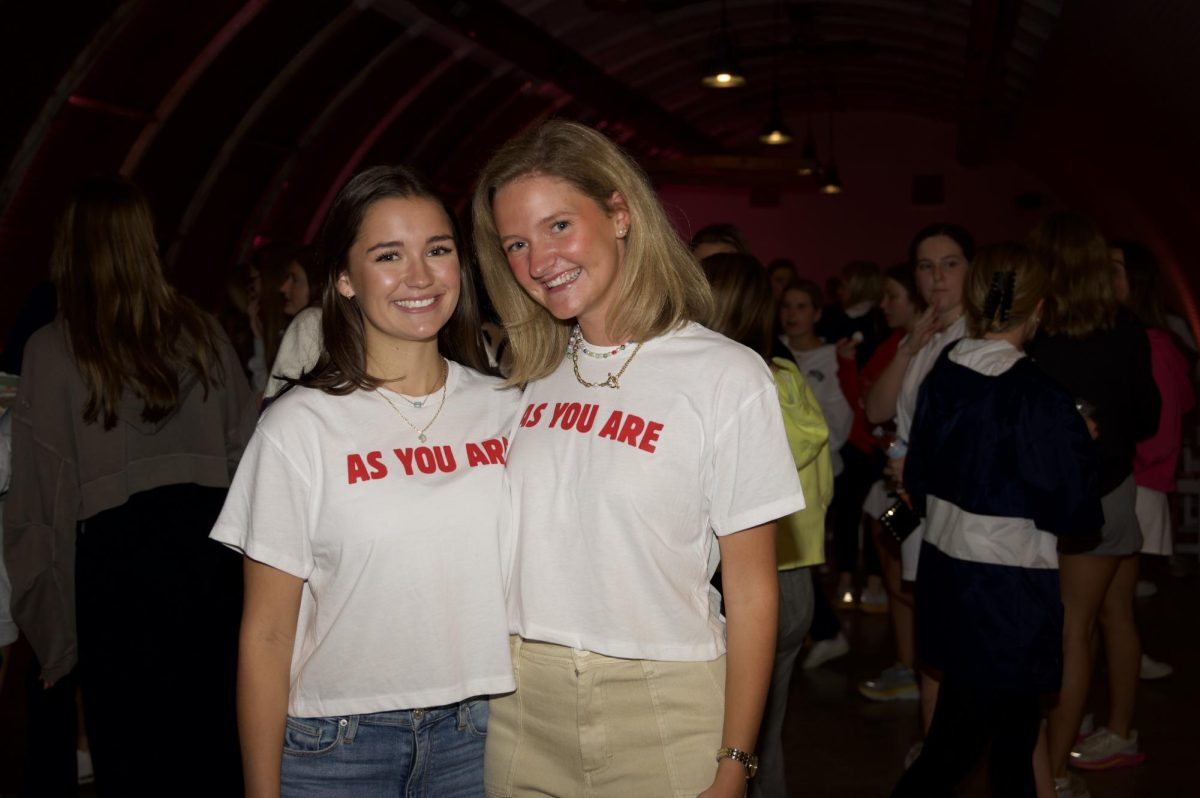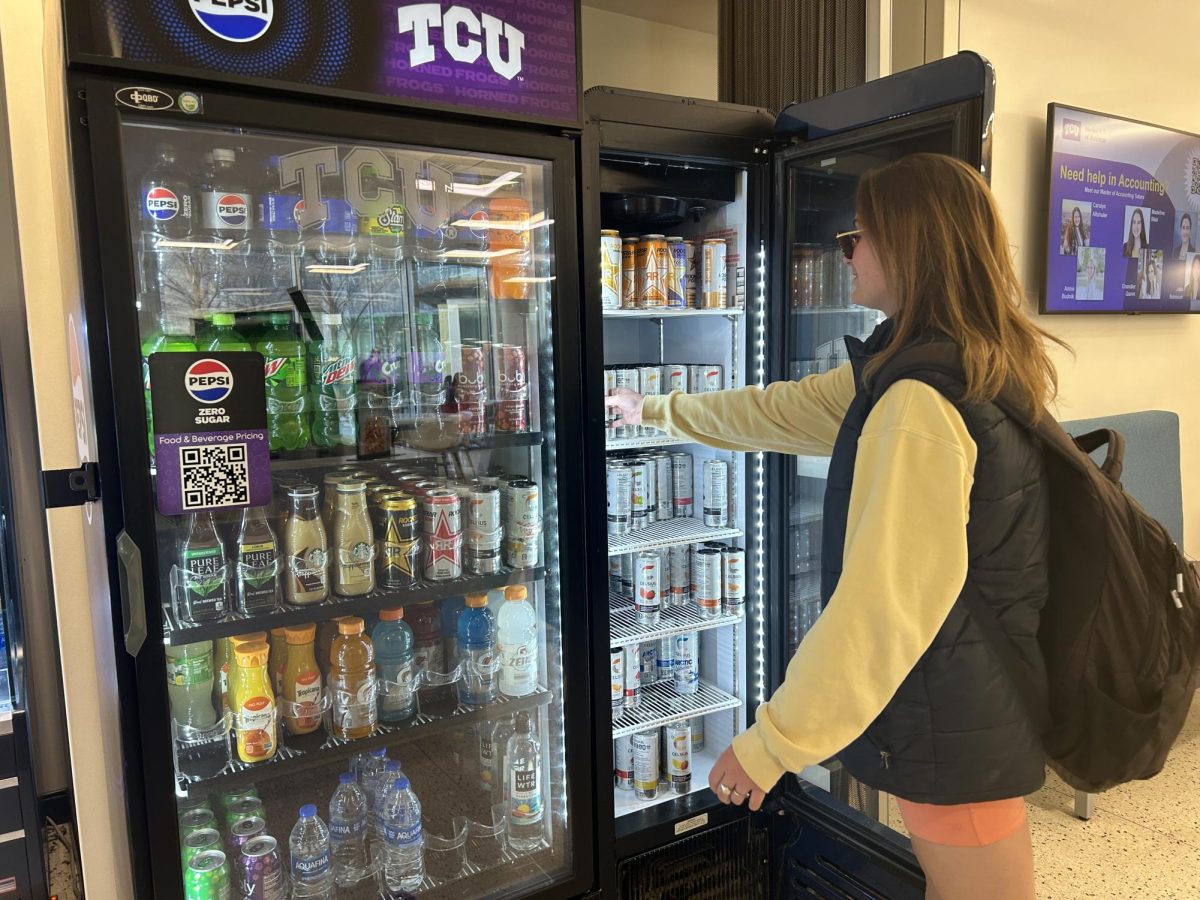TCU has made strides toward making the campus ethnically diverse for decades. The African-American alumni and community share their experiences and how the campus should strengthen their mission for inclusiveness.
In 1962, TCU admitted its first three African American students on campus.
According to TCU Magazine Allene Jones was one of the three first black students enrolled on campus.
“There is pressure to being the first at anything,” she remembers telling him. “If I fail, I feel like that sets the stage for future black students. I cannot fail.”
Jone’s impact on the TCU community was the start for upcoming African American students that were to about the embark history.
Many black alumni in the earlier eras felt that they had a positive experience at TCU.
1978 alumna Glenda Hale-Lewis says she remembers the moment TCU offered her a full academic scholarship after taking a look at her transcript.
“I gave back to TCU of what they gave to me by doing some volunteering,” Hale-Lewis said.
Despite the low numbers of African Americans the students felt that they were able to build a close-knit bond with one another. Assistant Vice Chancellor Darron Turner says one of his favorite memories was hanging out in the student center with his friends.
“We were pushing each other to do well, it’s not to say that you didn’t have friends from other ethnic groups, but these people had similar experiences as you had,” Turner said. “If you said something then they understood what you were talking about.”
Board of Trustees member Ron Parker said that as a student athlete he never allowed being a student athlete inhibit him from being a student, because of his involvement on campus such as attending music recitals and administrating meetings.
“I felt embraced on campus, because it was inclusive,” Parker said. “We were in a discovery mode coming on campus.”
Some of the alumni have said that due to the changes of society along with the Civil Rights movement and other historical events that occurred in that era caused TCU to transform with the world.
One of those changes was the student body electing Jennifer Brooks as the university’s first black Miss TCU in 1971.
The first black Ms. TCU Brooks says she came to TCU with a different perspective, because of her experience of taking a Semester at Sea program prior to enrolling on campus.
“ I had the chance too see someone with leprosy in Africa, I saw children starving in India.” Brooks said. “So now in terms with my own life I’ve always tried to live it with compassion and sometimes you let some things flip off your shoulders and you move forward in a positive way to try to make a difference in someone else’s life.”
The students elected Brooks as the first black Miss TCU broke the color barrier as a new era on campus.
“I felt like it was a chance for me then to encourage other people, so I would do things like speaking to youth groups more than what I would have,” Brooks said.
Brooks remembers the various articles published about her accomplishment such as JET and Fort Worth Star-Telegram about being the first African-American queen in the Southwest Conference.
“I still have the Telegram from our football players saying congrats to our queen,” Brooks said.
However, some of the black alumni did experience some tensions that had an effect on the student body perception of inclusion.
In 1969, TCU’s first black cheerleader Ron Hurdle said he remembers a moment when his squad members ignored a concern from then-Chancellor Moudy to not perform any physical drill routines with the opposite sex, due to the assumption of pressure from some of the alums because he was black.
“I was embarrassed, but happy that my squad accepted diversity,” Hurdle said.
During the earlier times the road to a more inclusive campus came with some rough patches.
Hurdle said that there was a separation on campus, because many of the minority students were either on scholarship or grants more so than the white students.
“The biggest thing that separated us was economics,” Hurdle said.
The road to diversifying the campus has gone through many phases with various techniques. Starting with the ambition for TCU connecting with the Fort Worth community that led to the engagement for former Fort Worth assistant city manager Vernell Sturns to be the first African-American elected on the board of trustees.
Sturns said that he knew coming in that TCU had not done a lot of work in the area of diversity and that he could assist in that regard.
“In order for TCU to be competitive they would have to break the mold of what other universities were doing,” Sturns said.
Sturns said that one of his initiative was to get TCU to collaborate with Historically Black College Jarvis Christian College as a way of creating a diversifying relationship between both schools, but he was unable accomplish his mission.
“I felt that the relationship would have helped both schools academically and socially,” Sturns said.
However, it wasn’t until former Chancellor Michael Ferrari joined the TCU community that the image of campus was about to go through a new facelift.
Former Chancellor advisor Dr. Cornell Thomas said that listening to a lecture from Ferrari about diversity and inclusion sparked him to set up a meeting to see if he was serious.
“Every one of his major experiences talked about the importance of diversity,” Thomas said. “I sent an e-mail to him saying that if he is serious for what he is saying.”
In 1990, Dr. Cornell Thomas says while serving as a faculty advisor for the then-Black Student Caucas (Black Student Association) he saw that there were 137 black males on campus with two as non-athletes.
Through Thomas’s conversation with the students some of the black female students explained to him about their perception of a lack of black male students to date.
Thomas said that he hosted a forum with the guys to understand their perspective on campus.
“They had no reason to date, because they were athletes, they get whatever they want,” Thomas said.
Thomas said the hit from SACS about diversity had a significant affect on the university being more aggressive.
Thomas explained Chancellor Ferrari was concerned about minority leaders calling the university a white racist elitist institution.
“I told him that I wasn’t going to tell him why but I could arrange a small setting of the minority leaders to tell him and that they were going to let him have it,” Thomas said. “But that they wanted to be apart of the change.”
The meeting with Ferrari and various minority leaders impacted the helped to transform the face of TCU and the beginning of the creation of the university’s community scholars program.
Ferrari said that he initiated the Chancellors council on diversity, the development of new mission and vision statements and an emphasis on more vigorous hiring practices to attract more women and persons of color.
“I recall my wonderful years at TCU of focusing on and strengthening the university’s commitment to becoming a more inclusive and diverse community,” Ferrari said.
Thomas said that Ferrari’s mission was to always “imagine the possibility.”
“The initial purpose of community scholars programs was that we want to promote the denotion of inclusion,” Thomas said. “The process of how we should include all voices in the process of TCU becoming better.”
Thomas said that the goal was to get more students of race on campus, but that they would also need to integrate themselves into other student organizations and not just segregate themselves.
“So that our majority students would see that skin color doesn’t equate to ‘less than’,” Thomas said. “Once you get to know someone then you can get past a lot of the stereotypes.”
Despite the changes that TCU has experienced some are saying that in some cases the campus is moving backward from their focus for inclusion.1994 Alumna LeAnn Sims said that even though she had a great experience at TCU of being a cheerleader and finalist for homecoming queen she had some negative experiences.
“My mother Mildred Sims was amazed about how my non-positive experiences that I would tell her coming home that I encountered as a student was similar to her experiences who graduated in 1969,” Sims said.
2009 alumna Lauren Gray explained her experiences by saying with her involvement in various organizations sometimes it was difficult for minority students to feel included with their thoughts and ideas.
“I was involved with a lot of scholarly organizations to where I was the only black,” Gray said.
Gray said it was almost an unwritten rule for a barrier against you. Examples would include involvement with SGA and trying to host an ethnically diverse annual campus concert for all members of the student body.
Despite the practices of improvement with the increased numbers of diverse students from the past decades, some are saying there is still more room to grow in the university striving to make TCU a more diverse and inclusive campus.
“Instead of just pushing minority groups to attend majority groups events. It should be a standard for all students,” Gray said.
In 2013, a group of TCU students decided to collaborate and publish the 2013 Diversity report that started a conversation about the university’s standings on creating a diverse and inclusive campus.
“I think the report said a couple of things, we need to look at how we are looking at diversity and what that means,” Turner said.
Turner also said the report has not left the conscious of the university.
“When students take an active role of being better prepared to be ethical citizens to make an impact in our global community it is because it’s your education,” Turner said. “That is always a good thing.”
Currently, TCU has 490 African-American students enrolled in the Fall 2013, according to the Office of Institutional Research‘s website.
“I think they are mindful of the needs for diverse student population and ways of supporting them,” alumna Ashanti Williams said.
The progress for a more diverse and inclusive campus has improved since the earlier days.
Chancellor Boschini says that he’s very proud of the gains TCU has made in making the campus into a more inclusive campus with the percentage of 20 percent minorities on campus.
“I predict TCU will be even more diverse and even more inclusive in all areas,” Boschini said.
Boschini said students as a group have a huge influence of making the campus more inclusive rather than one administrator.
“The advice I would give a student of color is to enter their first day of college as an explorer of life and take advantage of every opportunity that you may not be familiar with to expand your experience with life,” Parker said.
“Because the worse thing to do is to gravitate to people that look like them to stay in their comfort zone and be comfortable to the norms.”






